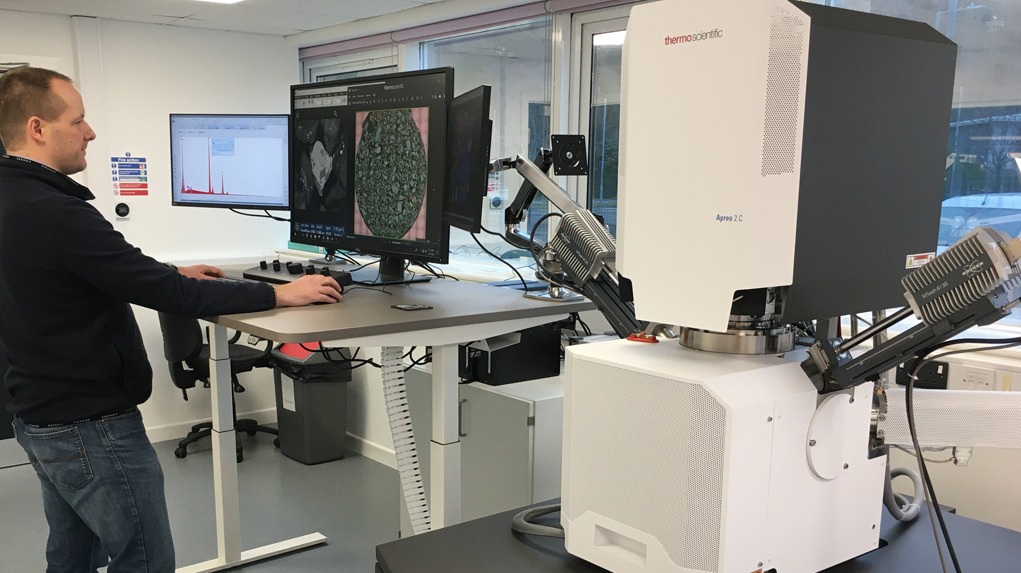Mobilizing to Monitor Microplastics on Snowdon (Yr Wyddfa)
Viridien Stories | Jun 5, 2022
To mark World Environment Day, we spotlight the work of scientists at Viridien’s Geoscience Laboratories, who are using new analysis techniques to support greater environmental awareness.
Snowdonia (Eryri) is Wales’s largest National Park and home to its highest mountain, Snowdon (Yr Wyddfa). With the park attracting 4 million visitors and 600,000 people climbing Yr Wyddfa every year, the Snowdonia National Park Authority (SNPA) is working to raise public awareness about one of its challenges: plastic pollution.
As a local employer with staff passionate about the conservation and preservation of Snowdonia, Viridien was keen to support SNPA in this initiative. In April last year, its Environmental Science and Geoscience Laboratories teams, based in Conwy, North Wales, proposed a microplastics survey to analyze and characterize the microplastic pollution on the mountain.
David Gold, technical business development lead for Viridien’s Environmental Science group, explains: “We deployed a new microplastic identification and quantification technique based on an innovative sample preparation and analysis workflow. This can be used for rapid, mass sample screening to help identify high concentrations of microplastic significantly faster than with existing manual and optical methods. The quantitative information we can deliver, such as volume, size and morphology of suspected plastic, can help stakeholders like SNPA work out where high concentrations of microplastics occur and how best to stop them from entering the food chain or natural environment.”
Viridien’s Geoscience Laboratories team took samples from 21 sites along the most popular walking route, the Llanberis Path, leading to the summit of Snowdon.
Amy McGarry, laboratory supervisor, emphasized the care taken to avoid further contamination: “The sampling process involved using a metal trowel to recover the soil and wrapping the samples in aluminum foil to protect them. After careful preparation, we then analyzed these samples in the lab using our QEMSCAN equipment.”
Gareth Rogers, Viridien’s QEMSCAN specialist, explains: “This machine is normally used for automated quantitative mineral analysis, but we programmed it to recognize plastics. We also have a new automated optical slide scanner with some interesting features, like fluorescence, to tell us more about microplastics.”
Mark Rees, laboratory specialist, summarized the findings: “The results indicate that the soil samples contained a baseline of 1–2% microplastic particles, although this was as high as 5% in places where people congregated. These were found to be predominantly small, highly abraded particles, probably from the fragmentation of larger plastic material and fibers shed from clothing.”
QEMSCAN® equipment used to identify the percentage of microplastics in the collected soil samples.
As the environmental impact of microplastic pollution increases with more single-use plastic produced and discarded, Viridien recognizes its social responsibility to help monitor this global problem with its technology and scientific expertise, giving society information to lessen the impact of plastics pollution.
Louise Hamdy, senior research scientist, is very positive about the team’s work: “It’s very exciting as we’re solving real-world problems and this work will have an impact in the years to come. We’re already taking part in a lot of collaboration work and reaching out to third-party partners as we explore these new areas.”
David Gold can also see the potential benefits: “The technique Viridien used on Snowdon strengthens our portfolio of advanced environmental monitoring solutions and has opened up new opportunities to work with a wide range of clients on all kinds of potential applications globally.”
QEMSCAN is a registered trademark of FEI Company

